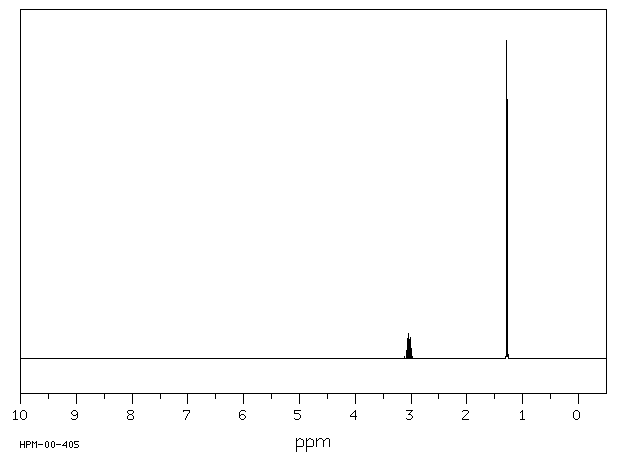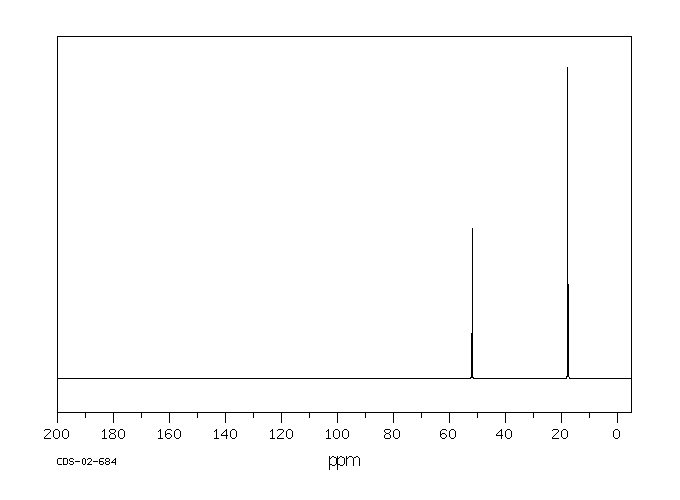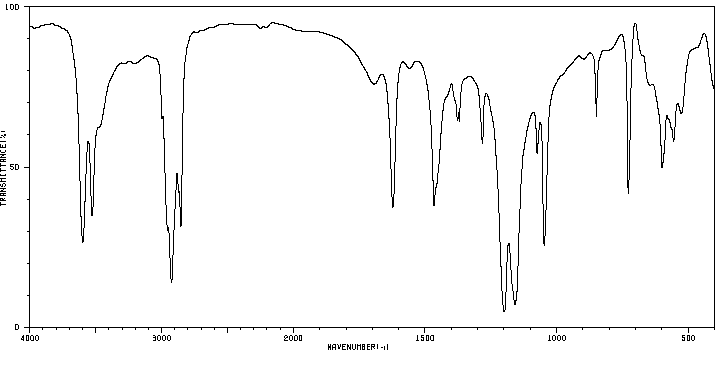propane-2-sulfonic acid ; sodium-salt | 5399-58-6
中文名称
——
中文别名
——
英文名称
propane-2-sulfonic acid ; sodium-salt
英文别名
Propan-2-sulfonsaeure; Natrium-Salz;sodium propane-2-sulfonate;2-Propanesulfonic acid, sodium salt;sodium;propane-2-sulfonate
CAS
5399-58-6
化学式
C3H7O3S*Na
mdl
——
分子量
146.143
InChiKey
JUAHWAGHDQJOLT-UHFFFAOYSA-M
BEILSTEIN
——
EINECS
——
-
物化性质
-
计算性质
-
ADMET
-
安全信息
-
SDS
-
制备方法与用途
-
上下游信息
-
文献信息
-
表征谱图
-
同类化合物
-
相关功能分类
-
相关结构分类
物化性质
-
熔点:>300 °C(lit.)
-
溶解度:少量溶于甲醇和水
计算性质
-
辛醇/水分配系数(LogP):-3.06
-
重原子数:8
-
可旋转键数:1
-
环数:0.0
-
sp3杂化的碳原子比例:1.0
-
拓扑面积:65.6
-
氢给体数:0
-
氢受体数:3
安全信息
-
危险品标志:Xn
-
安全说明:S26,S36/37/39
-
危险类别码:R22
-
WGK Germany:3
-
海关编码:2904100000
SDS
| Name: | 2-Propanesulfonic acid sodium salt mono- hydrate Material Safety Data Sheet |
| Synonym: | |
| CAS: | 5399-58-6 |
Synonym:
Section 2 - COMPOSITION, INFORMATION ON INGREDIENTS
| CAS# | Chemical Name | content | EINECS# |
| 5399-58-6 | 2-Propanesulfonic acid, sodium salt | 226-434-2 |
Risk Phrases: None Listed.
Section 3 - HAZARDS IDENTIFICATION
EMERGENCY OVERVIEW
The toxicological properties of this material have not been fully investigated.
Potential Health Effects
Eye:
May cause eye irritation.
Skin:
May cause skin irritation.
Ingestion:
The toxicological properties of this substance have not been fully investigated.
Inhalation:
May cause respiratory tract irritation.
Chronic:
Not available.
Section 4 - FIRST AID MEASURES
Eyes: Flush eyes with plenty of water for at least 15 minutes, occasionally lifting the upper and lower eyelids.
Skin:
Flush skin with plenty of water for at least 15 minutes while removing contaminated clothing and shoes.
Ingestion:
Get medical aid. Wash mouth out with water.
Inhalation:
Remove from exposure and move to fresh air immediately. If not breathing, give artificial respiration. If breathing is difficult, give oxygen.
Notes to Physician:
Section 5 - FIRE FIGHTING MEASURES
General Information:
As in any fire, wear a self-contained breathing apparatus in pressure-demand, MSHA/NIOSH (approved or equivalent), and full protective gear.
Extinguishing Media:
Use water spray, dry chemical, carbon dioxide, or chemical foam.
Section 6 - ACCIDENTAL RELEASE MEASURES
General Information: Use proper personal protective equipment as indicated in Section 8.
Spills/Leaks:
Vacuum or sweep up material and place into a suitable disposal container.
Section 7 - HANDLING and STORAGE
Handling:
Avoid breathing dust, vapor, mist, or gas. Avoid contact with skin and eyes. Use only in a chemical fume hood.
Storage:
Store in a cool, dry place. Store in a tightly closed container.
Section 8 - EXPOSURE CONTROLS, PERSONAL PROTECTION
Engineering Controls:
Facilities storing or utilizing this material should be equipped with an eyewash facility and a safety shower.
Exposure Limits CAS# 5399-58-6: Personal Protective Equipment Eyes: Wear chemical splash goggles.
Skin:
Wear appropriate protective gloves to prevent skin exposure.
Clothing:
Wear a chemical apron.
Respirators:
A NIOSH/MSHA approved air purifying dust or mist respirator or European Standard EN 149.
Section 9 - PHYSICAL AND CHEMICAL PROPERTIES
Physical State: Solid
Color: white
Odor: Not available.
pH: Not available.
Vapor Pressure: Not available.
Viscosity: Not available.
Boiling Point: Not available.
Freezing/Melting Point: 0 deg C
Autoignition Temperature: Not available.
Flash Point: Not available.
Explosion Limits, lower: Not available.
Explosion Limits, upper: Not available.
Decomposition Temperature:
Solubility in water:
Specific Gravity/Density:
Molecular Formula: C3H7NaO3S.H2O
Molecular Weight: 164.16
Section 10 - STABILITY AND REACTIVITY
Chemical Stability:
Stable under normal temperatures and pressures.
Conditions to Avoid:
Incompatible materials.
Incompatibilities with Other Materials:
Strong oxidizing agents.
Hazardous Decomposition Products:
Carbon monoxide, oxides of sulfur, carbon dioxide.
Hazardous Polymerization: Will not occur.
Section 11 - TOXICOLOGICAL INFORMATION
RTECS#:
CAS# 5399-58-6 unlisted.
LD50/LC50:
Not available.
Carcinogenicity:
2-Propanesulfonic acid, sodium salt - Not listed by ACGIH, IARC, or NTP.
Section 12 - ECOLOGICAL INFORMATION
Section 13 - DISPOSAL CONSIDERATIONS
Dispose of in a manner consistent with federal, state, and local regulations.
Section 14 - TRANSPORT INFORMATION
IATA
Not regulated as a hazardous material.
IMO
Not regulated as a hazardous material.
RID/ADR
Not regulated as a hazardous material.
Section 15 - REGULATORY INFORMATION
European/International Regulations
European Labeling in Accordance with EC Directives
Hazard Symbols: Not available.
Risk Phrases:
Safety Phrases:
WGK (Water Danger/Protection)
CAS# 5399-58-6: No information available.
Canada
CAS# 5399-58-6 is listed on Canada's NDSL List.
CAS# 5399-58-6 is not listed on Canada's Ingredient Disclosure List.
US FEDERAL
TSCA
CAS# 5399-58-6 is listed on the TSCA inventory.
SECTION 16 - ADDITIONAL INFORMATION
N/A
反应信息
-
作为反应物:描述:参考文献:名称:King; Lam; Skonieczny, Journal of the American Chemical Society, 1992, vol. 114, # 5, p. 1743 - 1749摘要:DOI:
-
作为产物:描述:参考文献:名称:King; Lam; Skonieczny, Journal of the American Chemical Society, 1992, vol. 114, # 5, p. 1743 - 1749摘要:DOI:
文献信息
-
Tagging Peptides with a Redox Responsive Fluorescent Probe Enabled by Photoredox Difunctionalization of Phenylacetylenes with Sulfinates and Disulfides作者:Hong Liu、Guolin Li、Zhiyuan Peng、Shishuo Zhang、Xin Zhou、Qingchao Liu、Junfeng Wang、Yonghong Liu、Tiezheng JiaDOI:10.1021/jacsau.2c00577日期:2022.12.26regio- and stereoselectivity. Moreover, this powerful tactic could be employed to tag cysteine residues of complex polypeptides in solution or on resin merging with solid phase peptide synthesis (SPPS) techniques. A sulfonyl-derived redox responsive fluorescent probe could be conveniently introduced on the peptide, which displays green fluorescence in cells while showing blue fluorescence in medium在此,我们描述了芳基炔烃与二烷基二硫化物和烷基亚磺酸盐直接发生的光氧化还原三组分原子转移自由基加成 (ATRA) 反应,避免了使用化学不稳定且具有合成挑战性的S-烷基烷基硫代磺酸盐作为可行的加成伙伴。大量的 ( E)-β-烷基磺酰基乙烯基烷基硫化物的制备具有很好的区域选择性和立体选择性。此外,这种强大的策略可用于标记溶液中复杂多肽的半胱氨酸残基或在树脂上与固相肽合成 (SPPS) 技术合并。可以方便地将磺酰基衍生的氧化还原响应荧光探针引入肽上,其在细胞中显示绿色荧光,而在培养基中显示蓝色荧光。光物理研究表明,发射荧光的红移证明羰基还原为相应的羟基部分。有趣的是,标记肽的荧光变化可以通过 H 2 O 2处理在细胞中恢复,由于活性氧 (ROS) 水平升高,羟基再氧化回酮而产生。
-
2-MORPHOLIN-4,6-DISUBSTITUTED PYRIMIDINE DERIVATIVE, AND PREPARATION METHOD AND PHARMACEUTICAL USE THEREOF申请人:Shanghai Haiyan Pharmaceutical Technology Co., Ltd.公开号:EP3235816B1公开(公告)日:2020-02-12
-
Hampel, M.; Just, G.; Krebes, W., Journal fur praktische Chemie (Leipzig 1954), 1980, vol. 322, # 6, p. 987 - 990作者:Hampel, M.、Just, G.、Krebes, W.、Pritzkow, W.DOI:——日期:——
-
Roll; Cwalina, Journal of the American Pharmaceutical Association (1912), 1957, vol. 46, p. 578作者:Roll、CwalinaDOI:——日期:——
表征谱图
-
氢谱1HNMR
-
质谱MS
-
碳谱13CNMR
-
红外IR
-
拉曼Raman
-
峰位数据
-
峰位匹配
-
表征信息
同类化合物
高烯丙基(甲磺酰基)胺
高炔丙基(甲磺酰基)胺
顺式-9-十八碳烯基甲烷磺酸酯
顺式-4-乙基环己基甲烷磺酸酯
顺-1,2-双(甲磺酰基氧基甲基)环己烷
阿坎酸杂质
阿坎酸
锌甲烷磺酸盐
铵磺酸甜菜碱-3
铵磺酸甜菜碱-2
铵磺酸甜菜碱-1
铬雾抑制剂
铁三(三氟甲基磺酰基)亚胺
钾3-(三羟基硅烷基)-1-丙烷磺酸酯
钾1,1,2,2,3,3,4,4-八氟丁烷-1-磺酸盐
钡二乙烷磺酸酯
钠3-氨基丙烷磺酸酯
钠3-氨基-3-氧代-丙烷-1-磺酸酯
钠3-(三羟基硅烷基)-1-丙烷磺酸酯
钠2-[2-[2-[2-[2-[2-[2-[2-[2-[2-(2-十八碳-9-烯氧基乙氧基)乙氧基]乙氧基]乙氧基]乙氧基]乙氧基]乙氧基]乙氧基]乙氧基]乙氧基]-2-氧代-乙烷磺酸酯
钠1-羟基-1-庚烷磺酸酯
钠(1E)-1-十二碳烯-1-磺酸酯
酪朊酸钠
辛烷-1-磺酸甲酯
辛烷-1-磺酸乙酯
辛基-1-磺酸戊酯
辛-2-烯-1-磺酸
辅酶 M
西尼必利杂质7
萘-1,8-二甲醇
英丙舒凡对甲苯磺酸盐
英丙舒凡
苯基硒基三氟甲烷磺酸酯
芥酸酰胺丙基羟基磺基甜菜碱
艾日布林中间体
脒基牛磺酸
胺磺酸甜菜碱-4
联硫亚盐氯乙醛钠水合物
羧基-五聚乙二醇-磺酸
羟甲基磺酸钠
羟基甲烷磺酸铵盐
羟基甲烷磺酸钾
羟基甲氧基甲醇甲磺酸酯
羟乙磺酸钾
羟乙基磺酸铵盐
羟乙基磺酸钠
羟丙基硫代硫酸钠
美司那
磺酸钠
磺酸己烷









